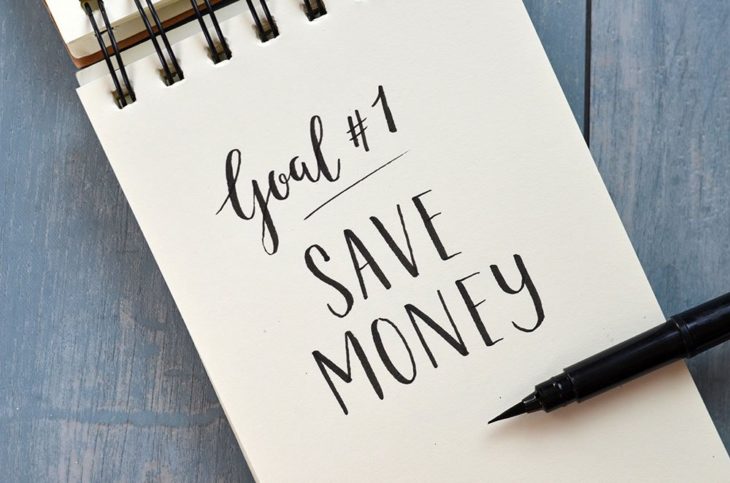In this tough economic climate, after paying all of your bills, you’re lucky if the money left over from your paycheck each month allows you to splurge on a trendy item at Forever 21. However, even if you’re not rolling in dough right now, you still should be making a concerted effort to stash away some money for the future, says Manisha Thakor, personal finance expert for women and author of On My Own Two Feet: A Modern Girl’s Guide to Personal Finance.
Here are her suggestions for how to create a nest egg now, while still leaving yourself enough pocket change to have a good time in the now.
Contents
1. Save early

Source: Akron Canton Weddings
Thakor says that women in their 20s and 30s should save 15 percent of their gross (that’s pre-tax) income – 10 percent for retirement, and 5 percent for big-ticket items like a wedding or graduate school. It may seem like a hefty percentage, but forgoing a few extra trips to Bloomingdale’s or one night at the bar per week while you’re young will likely set you up for cruising around the world (with a much younger, Ashton Kutcher look-alike, naturally) in your mid-60s.
“A woman who starts saving $5,000 a year every year in her early-20s, works until age 65, and sees her investments go up 7 percent a year on average will retire with over $1,000,000 in savings,” says Thakor. “By contrast, a woman who waits until her early 40s to start saving that same $5,000 a year every year until age 65 will end up with less than $300,000 in savings. Those extra twenties years give you over three times more money in retirement.”
So be strong and don’t rationalize blowing a wad of cash on a trip to Cabo, thinking you’ll start saving down the road when you make more money. “That’s the financial equivalent of saying you’ll start exercising regularly after you’ve lost enough weight to look great in that cute workout outfit—not gonna happen!” Thakor says. Instead, tuck some money away and becomes friends with some chick whose family has a beach house.
2. Take advantage of what your employer has to offer

Source: Thrive Marketing
Your job may suck, but odds are, your place of employment offers some fantastic savings opportunities. Employer-based retirement savings plans—programs that tend to have names that start with the number “4,” like 401(k), 403(b), 457, etc.—are like the financial version of crockpot. In other words, put the lid on, walk away, and let it do its thing.
“You tell your employer what percentage of your paycheck you want tucked away each month for retirement,” Thakor explains. “The ideal request is 10 percent—and how you want that money invested, and it’s done.”
A major bonus: some employers offer a “match” program where for every dollar you contribute, they may contribute another fifty cents or dollar on your behalf, up to some percentage of your income. “If your employer offers this match benefit, you absolutely want to contribute as much as you can to the point that they’ll match it—it’s literally free money and a guaranteed return,” Thakor says. Kinda makes your cube neighbor who slurps her soup seem a little less annoying, no?
3. Open a ROTH IRA

Source: Pro-Olivum
If your employer doesn’t offer a retirement savings program, but you have money to save and invest, you can open an individual retirement account (IRA) on your own. IRAs come in a variety of flavors, but if you are single and earn less than $105,000 a year (or are married and your combined income is less than $167,000 a year), the one for you is a ROTH IRA, Thakor says. If you’re below 49 years old, the minimum you need to start one is $5,000, which hopefully won’t completely deplete your overflow, allowing you to still enjoy the occasional facial and weekend vacay. Thakor’s favorite financial institutions that offer ROTH IRAs: Vanguard, Fidelity and Charles Schwab.
4. Pay off those credit cards ASAP

Source: The Balance
Seriously woman, credit card interest payments will bleed your bank account dry, and worst of all, you don’t even get cute shoes to show for it. If you’re in bad credit card debt—anything with a mid-teens or above interest rate—Thakor advises that you still save via a 401 K or IRA, but make paying off your debt the top priority. Once the debt is paid off and you’ve cut up that pesky plastic, you can begin setting aside a greater percentage of your income for savings. And in the future, pay for extras with cash—you’ll be much less likely to overspend and get yourself back into that old mess.
Original by Chelsea Kaplan
